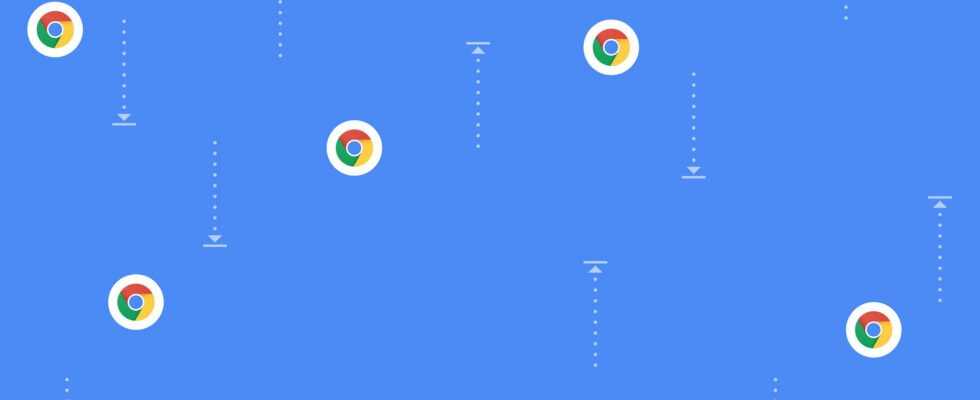Acting on the failure of FLoC to replace third-party cookies, Google is trying something else: an API called Topics, which proposes to temporarily associate three centers of interest per Internet user. Google hopes to complete this project by the end of 2022.
How to offer targeted advertising to Internet users, without (too) targeting them? This is squaring the circle that Google would like to solve by imagining new devices capable, on paper, of replacing third-party cookies and individualized targeting of Internet users. But take out these two factorsof the advertising equation is a more difficult exercise than it seems.
The FLoC project did not have the expected success. In summary, it was a question of placing each Internet user in a group – a cohort – quite large, of several thousand individuals. Cohort members were expected to share a similar profile. Clearly, the follow-up went up a notch: it was no longer individual, but at the level of the group.
But very quickly, the initiative aroused mistrust. A first unfortunate signal was perceived in 2021, when the first FLoC tests began in various regions of the world, except in Europe, where the General Data Protection Regulation (GDPR) applies. An anti-FLoC movement has also emerged, with sites refusing to participate in this program.
Google therefore acknowledges the impasse of FLoC, which is now ruled out. But Google cannot leave it at that, given its economic model, which is based almost entirely on advertising, particularly targeted advertising. For example, it made up 88% of the turnover of its parent company, Alphabet, in 2017. This is a strategic issue for the group.
Associate 3 centers of interest with Internet users
Instead, Google is therefore trying a new approach, presented this Tuesday, January 25: it is an API (acronym for programming interface: this allows software to obtain data from a third-party application, necessary for the tasks it has to perform, within the limits of what the API allows) for its Privacy Sandbox.
The Privacy Sandbox is an environment inserted into Google Chrome, in which the American company explores alternatives to third-party cookies in terms of advertising (it is in the Privacy Sandbox that FLoC was deployed, for example). The Privacy Sandbox dates from 2019 in the browser and it is she who must reconcile, in theory, privacy and advertising.
Google’s new proposal, which could be deployed by the end of 2022 if the obstacles in its path are not insurmountable, consists of associating themes (“Topics”, which is also the name of the API and of this new project) to Internet users. These themes would be a maximum of three, from the last three weeks of navigation and, finally, deletable.
These themes selected based on browsing history are meant to be “ representative of the main areas of user interest for a given week and selected by Chrome’s algorithms. Then they are kept for three weeks and then deleted. Google ensures that at no time do these processes involve external servers, including its own.
Topics will flow: Google says the API passes interests to sites that participate in Topics, as well as partner advertisers. Presence in this project is a priori based on volunteering, but given the future disappearance of third-party cookies in Google Chrome, sites may not have the flexibility to stay out.
Google also specifies that there will be control parameters allowing Internet users to view the shared themes, to delete those they do not like (we guess then that the rejected centers of interest will be replaced by another selection) and even of disable the feature entirely “says Vinay Goel, product manager for the Privacy Sandbox.
” With Topics, browsers can provide transparency and control to their users over this data “, he considers elsewhere. Because it is on these two points that Google insists: the processing is carried out entirely on the side of the Internet user, on his device, and not remotely. And the themes are both temporary and removable if needed.
Topics, a proposal for interest-based advertising
One final note of importance: the themes that Topics manages are supposed to be both decent and not too sensitive: ” themes are carefully selected to exclude potentially sensitive categories, such as gender or ethnicity “says the American company. Such targeting could otherwise cause Topics to be lost.
What’s next in the program now? Now that Topics has been unveiled, Google plans to soon launch an experiment on Chrome with the range of main commands for the Internet user and technical paraphernalia to be able to test the API on the website side. Google warns that the outlines of the API are likely to move depending on the feedback it gets.
Google, in any case, seeks to add a logic of co-construction to its project: thus, the final design and the technical aspects ” will be defined according to your feedback and the lessons we will learn from this experiment “. Clearly, to avoid misunderstandings and awkwardness with Topics, Google invites everyone to participate in the Privacy Sandbox and on GitHub.
” Each Privacy Sandbox proposal goes through a process that involves lengthy discussions with the web community and testing phases. This is a collaborative and open source effort “, insists Google. How will Topics be received after the outcry against FLoC? The answer will no doubt be known quickly this year.

